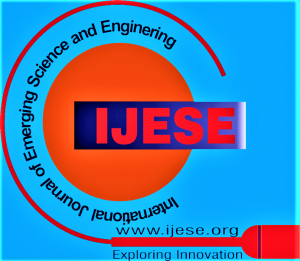![]()
Beyond Repair: A Critical Review of Smart, Sustainable, and AI-Driven Strengthening Techniques for Aging Civil Infrastructure
Girmay Mengesha Azanaw
Girmay Mengesha Azanaw, Lecturer, Department of Civil Engineering, Institute of Technology, University of Gondar, Gondar, Ethiopia.
Manuscript received on 21 April 2025 | First Revised Manuscript received on 24 April 2025 | Second Revised Manuscript received on 01 May 2025 | Manuscript Accepted on 15 May 2025 | Manuscript published on 30 May 2025 | PP: 10-19 | Volume-13 Issue-6, May 2025 | Retrieval Number: 100.1/ijese.F260213060525 | DOI: 10.35940/ijese.F2602.13060525
Open Access | Editorial and Publishing Policies | Cite | Zenodo | OJS | Indexing and Abstracting
© The Authors. Blue Eyes Intelligence Engineering and Sciences Publication (BEIESP). This is an open access article under the CC-BY-NC-ND license (http://creativecommons.org/licenses/by-nc-nd/4.0/)
Abstract: The durability and safety of civil infrastructure are progressively subjected to challenges posed by a range of factors, including aging, excessive utilization, environmental stressors, and natural disasters. Traditionally, efforts to strengthen structures have relied heavily on reactive and material-intensive solutions. However, recent developments signal a significant shift toward more intelligent, sustainable, and digitally informed approaches. This review comprehensively examines the evolving landscape of structural reinforcement techniques, tracing the movement from conventional methods to more advanced, adaptive systems. The analysis strongly emphasises evaluating structural performance through innovative means, highlighting the growing use of smart materials and the transformative role of digital tools and artificial intelligence (AI) in optimizing design and intervention strategies. These technological advances are enhancing efficiency and precision and enabling more predictive and responsive maintenance practices. The review considers aligning these emerging practices with broader sustainability and circular economy principles. It examines how strategies that prioritise material efficiency, reuse of existing components, and lifecycle-based planning can help mitigate the environmental impact of structural interventions. By integrating these dimensions, the paper underscores the potential of modern reinforcement techniques to support global ecological objectives while maintaining structural integrity. Moreover, the review outlines prospective directions for innovation, including AIassisted co-design processes, the use of 3D printing technologies for customised retrofitting, and the application of bio-inspired adaptive systems. These forward-thinking concepts are presented as key enablers of a new generation of reinforcement strategies— ones that are robust, responsive, and ecologically conscious. Through a synthesis of current research and emerging opportunities, this study aims to inform and inspire the advancement of structural strengthening methods that are equipped to meet the complex challenges of the future built environment.
Keywords: Structural Strengthening, Smart Infrastructure, Sustainable Retrofit, Artificial Intelligence in Civil Engineering, and Circular Economy in Construction.
Scope of the Article: Civil Engineering and Applications
